For many of us, deer are the most familiar and most encountered large mammals. Across the United States, the white-tailed deer thrives in rural, suburban and even urban environments. It’s become so common as to often be a nuisance – munching on landscaping, causing vehicle accidents and devastating forest ecosystems.
But the deer family, Cervidae, consists of 55 species (subject to taxonomic debate) found around the world. Cervids including some of the world’s most charismatic large mammals, including moose, elk and reindeer. Others, though, are small and secretive – and bizarre. There are deer with tusks instead of antlers, deer that bark and at least one deer that no researcher has ever seen alive.
I’m a lifelong deer fanatic and have long been fascinated by the lesser-known members of the family. Here are 6 cool and cryptic little deer, and where to find them.
-
Water Deer
(Hydropotes inermis)
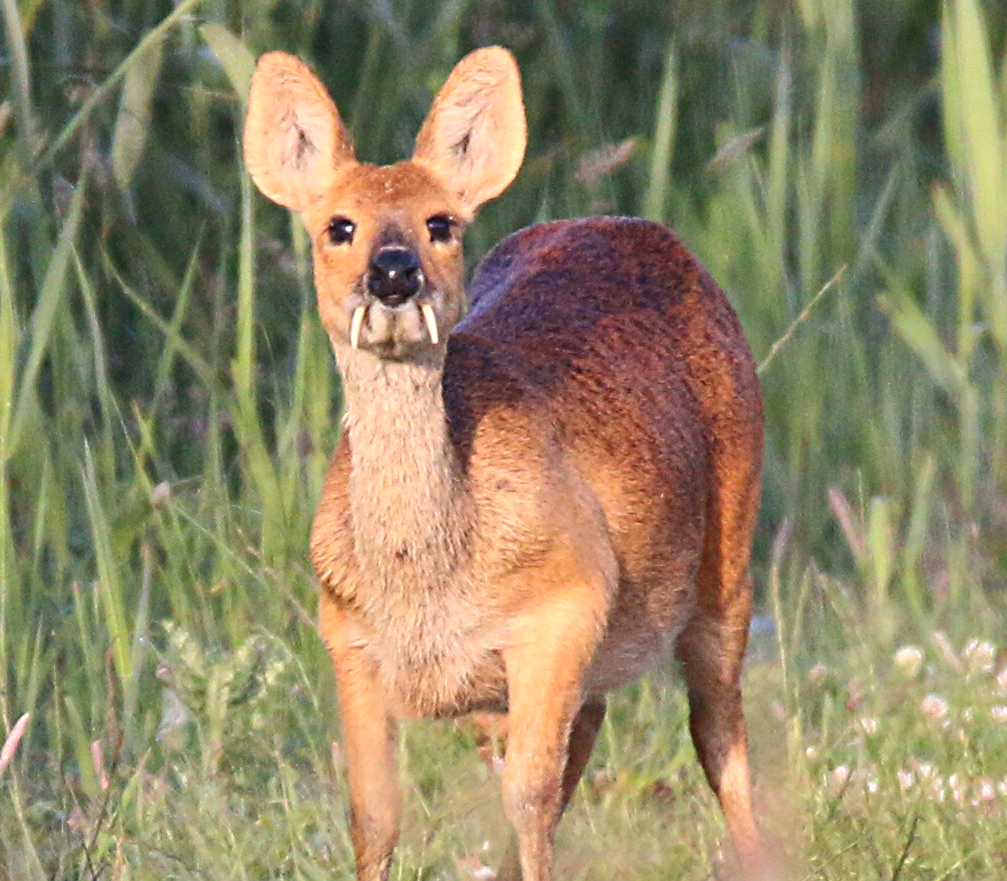
Water deer © Nick Goodrum / flickr via Creative Commons License Unlike most deer species, the water deer lacks antlers. Instead, it has tusks – actually canine teeth that point down. These tusks can be quite prominent, so much so that a popular local name is “vampire deer.” Usually, a territorial male just clicks the tusks to deter rivals, but if need be, water deer will engage in tusk-to-tusk combat.
Water deer are native to much of Korea and parts of China. In the late 1800s, they were introduced to Woburn Abbey, an English deer park known for its exotic species. Water deer from Woburn and another British park escaped, resulting in a feral population existing in parts of England.
Where to See: Water deer are widespread and even considered an agricultural pest in Korea. Some dedicated mammal watchers have reported finding them in places like Seosan Lakes. Undoubtedly, they’re easier to see in England, including at Woburn Abbey.
I consider Woburn Abbey a must-see for dedicated deer nerds. You’ll be able to get fantastic observations of water deer and other cervid species on beautiful, historic grounds. And it’s also the site that saved the Pere David’s deer from extinction in what is perhaps the weirdest species rescue of all time.
-
Pudu
(Pudu puda and Pudu mephistophiles)
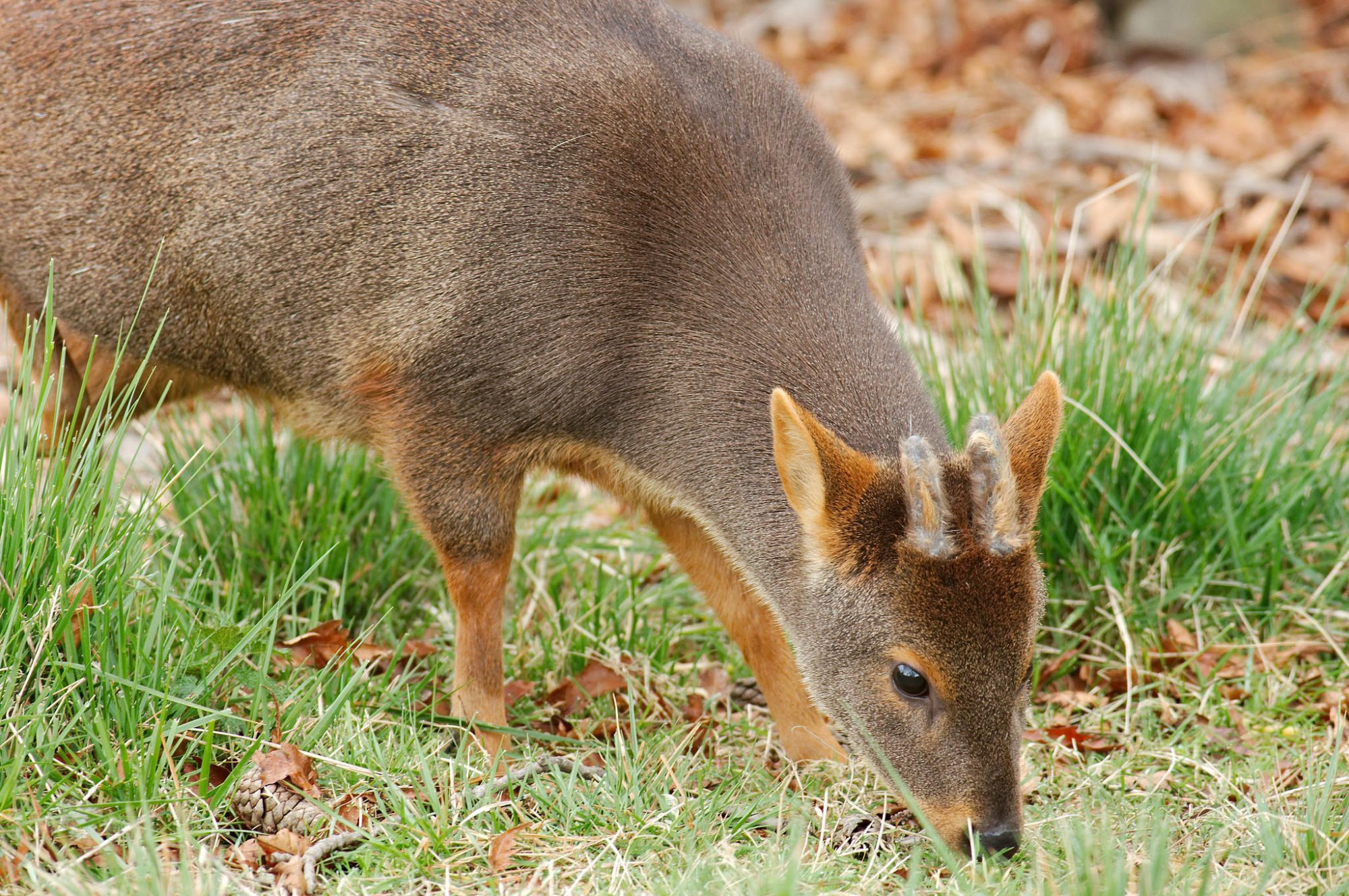
Pudu © Frederic BISSON / flickr via Creative Commons License Two closely related species of pudu, the northern and southern, are the smallest deer species on earth. They stand about 12 to 17 inches at the shoulder; at birth fawns are only about six inches high. And a pudu fawn is almost impossibly cute: part bunny, part Bambi, part plush toy.
The male pudu’s has short-spiked antlers that don’t branch. The deer live in South American temperate rainforests, and have suffered heavily from habitat loss.
Where to See: Finding a pudu in a thick rainforest is not easy. Mammal watcher extraordinaire Jon Hall recommends Parque Tepuhueico, a private reserve in Chile, for excellent chances at spotting southern pudu. The Nature Conservancy’s Valdivian Coastal Reserve, also in Chile, provides excellent habitat for pudus, where they are monitored by trail cameras.
-
Indian Muntjac (Muntiacus muntjac)
(Muntiacus muntjac)
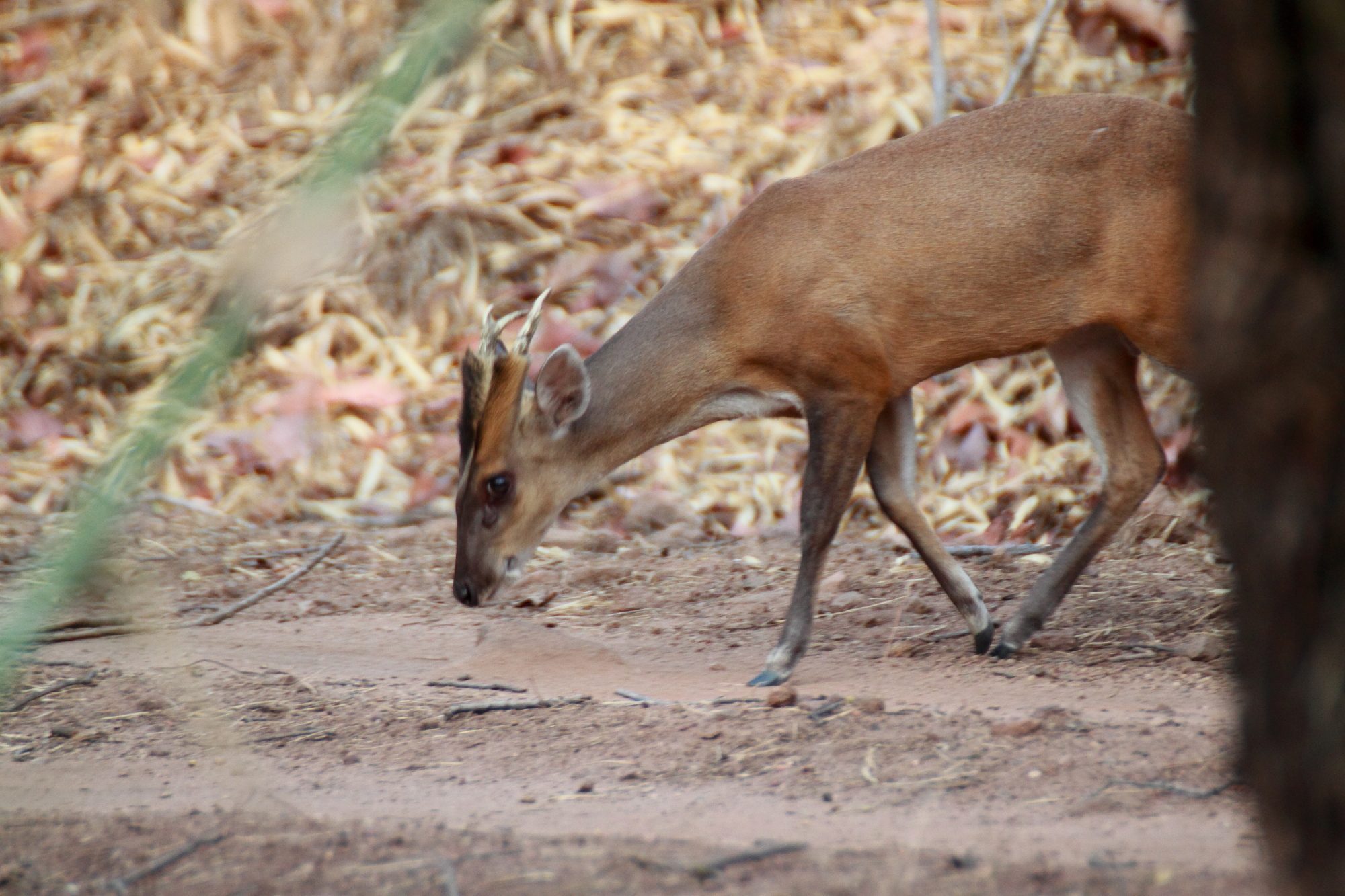
Indian Muntjac © Brian Gratwicke / flickr via a Creative Commons License Muntjac have antlers, but there aren’t many other similarities between these Asian deer and the whitetail in your backyard. They’re small and often hide in thick forest habitat. They have small tusks, which they use for fighting. They give a sharp, loud bark as an alarm.
There are around 15 species of these animals, most found in South Asia. The Indian muntjac is relatively common, but is still poorly understood. It has fewer chromosomes (7 for the male, 6 for the female), than any other mammal.
The Indian muntjac, unlike most hoofed mammals, is omnivorous, and has been documented dining on eggs and even carrion. It has a visible post-orbital gland – the dark spot at the base of the eye – that it uses for scent marking its territory.
Where To See: Spend enough time in India’s national parks, like Bandhavgarh or Kaziranga, and you have a good chance of seeing muntjacs (or, as they are appropriately known there, barking deer). You will often have only a quick view as the muntjac darts back into thick habitat.
Another species, the Reeves muntjac, was another deer introduction to Woburn Abbey. And like the water deer, muntjac escaped. The species is now invasive and can be seen throughout the British countryside.
-
Truong Son Muntjac
(Muntiacus truongsonensis)
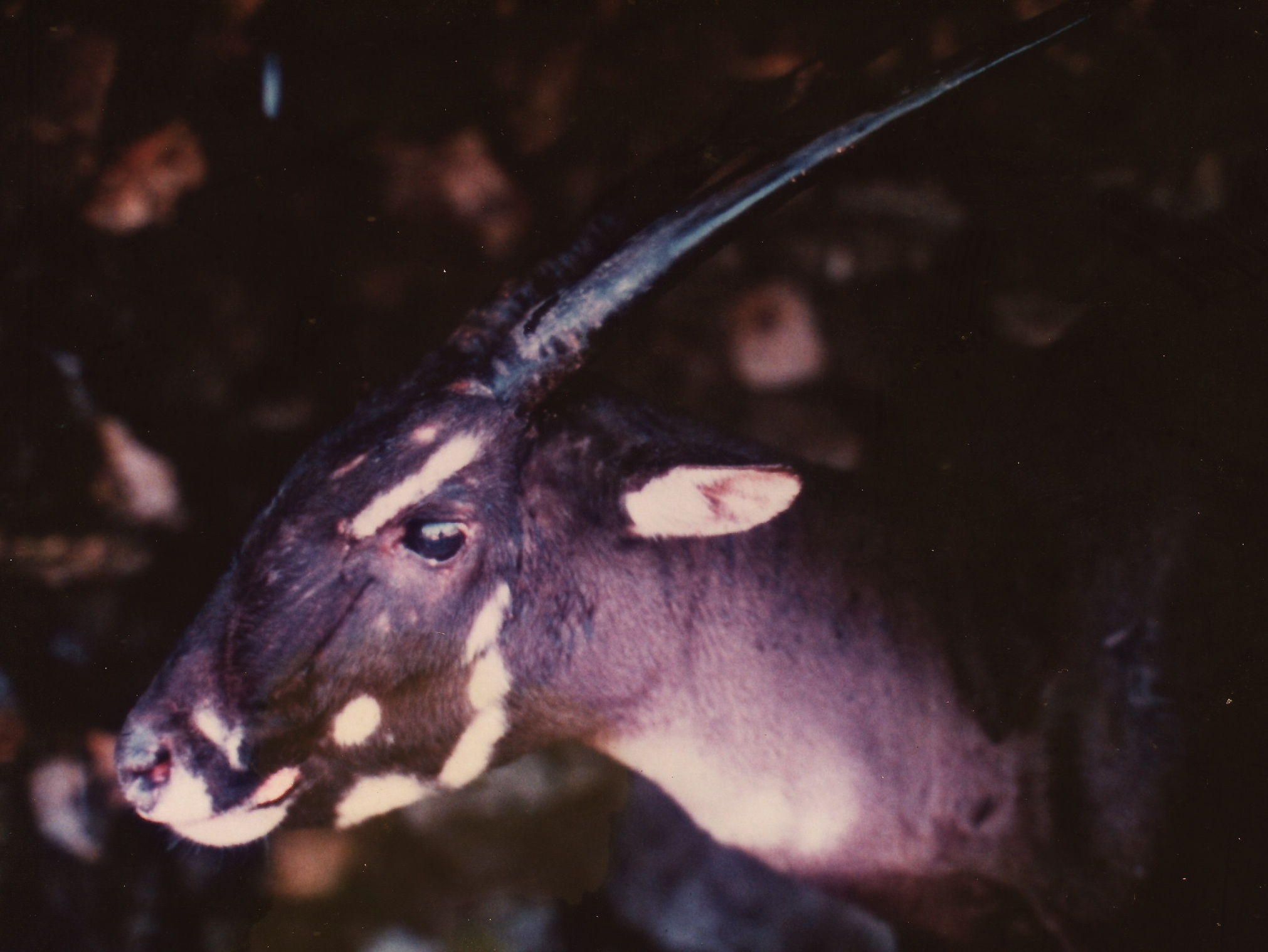
Since there are no images of a living Truong Son Muntjac, here’s a saola for consolation. Saola © Bill Robichaud / flickr via a Creative Commons License The Truong Son muntjac was documented by scientists in 1997 in the Annamite Mountains of Vietnam. Its “discovery” was perhaps overshadowed by that of the saola, the large ox-like mammal found in the same mountain range.
Like the saola, no Western researcher has ever seen a live Truong Son muntjac. The initial species description was based on skulls found in village markets and homes. There was a ten year period beginning in 2004 when there was no further evidence of these muntjacs. In 2014, a forest guard found a Truong Son muntjac in a trap and released it, documented on video.
The Annamite Mountains are home to another endemic muntjac species, the large-antlered muntjac. Unfortunately, these special animals are all threatened by rampant poaching by snares.
Where to See: The Truong Son muntjac is a true grail mammal. Seeing one would require a difficult expedition, extraordinary field skills and even more extraordinary luck. Look for a saola while you’re at it.
-
Pygmy Brocket Deer
(Mazama nana)
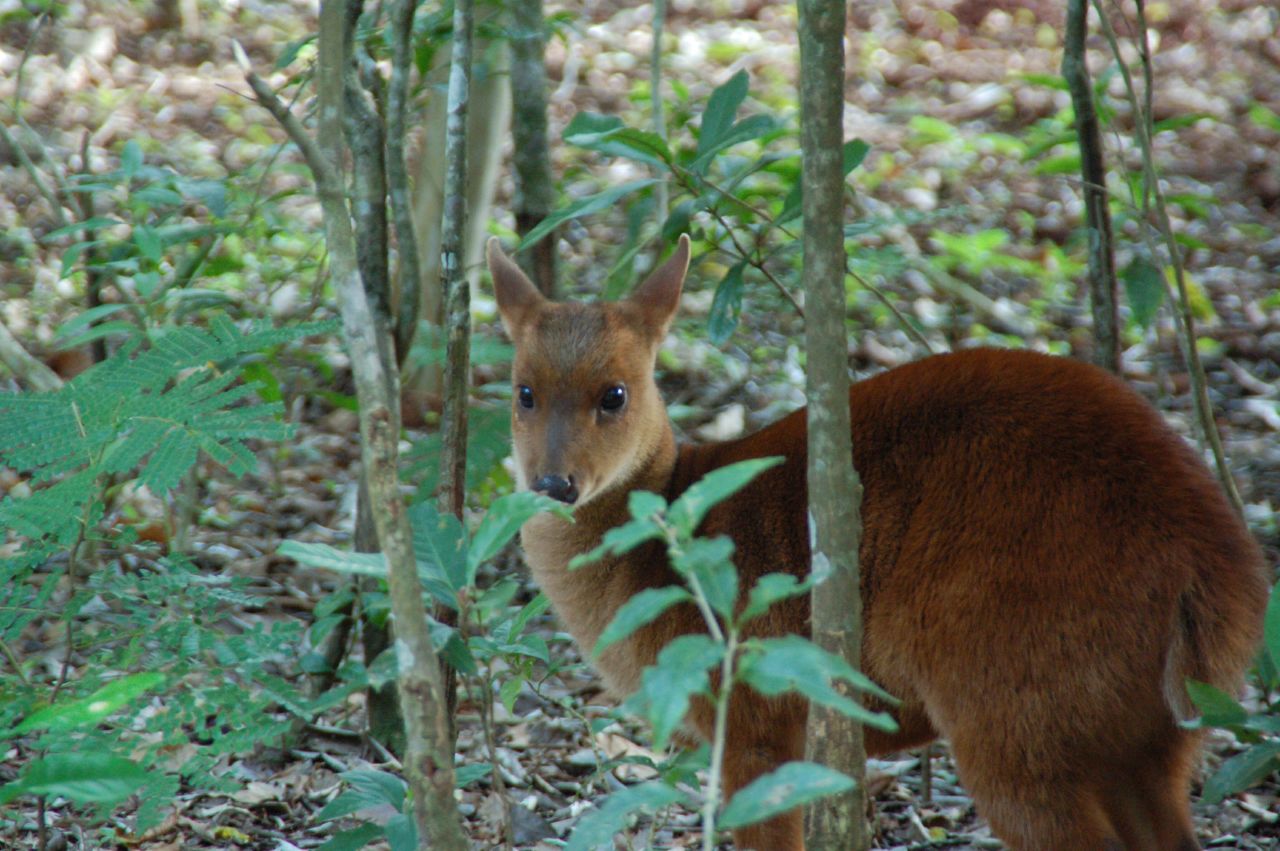
Pygmy brocket deer © Niall Corbet/ flickr via a Creative Commons License At first glance, brocket deer appear to be the New World version of muntjacs. They’re actually not that closely related, but brocket deer are small, cryptic deer found in forests in the Yucatan Peninsula south through Central and South America.
As recently as the 1990s, taxonomists recognized only four brocket species. Recent studies indicate there may be as many as 23 species. Some are relatively common and even frequently seen – if briefly – in national parks, reserves and cultural sites.
Many species, though, are rarely seen, even by researchers. The pygmy brocket is a perfect example. Found in a small region of Brazil, Argentina and Paraguay, it is secretive and nocturnal. Even on this crowded, heavily-studied planet, there are secrets. Even among deer.
Where to See: Some reports indicate pygmy brocket deer can be spotted at Iguazu Falls National Park in Argentina. Given the crowded nature of that popular tourist attraction, and the thick forest surrounding it, I suspect finding one there involves lottery odds – but it’s worth the try.
Other brocket species can be spotted by being alert and putting in time in many of Latin America’s excellent wildlife areas. I have seen the red brocket in Peru’s Manu National Park, and a brown brocket in the Brazilian Pantanal.
-
Hog Deer
(Axis porcinus)
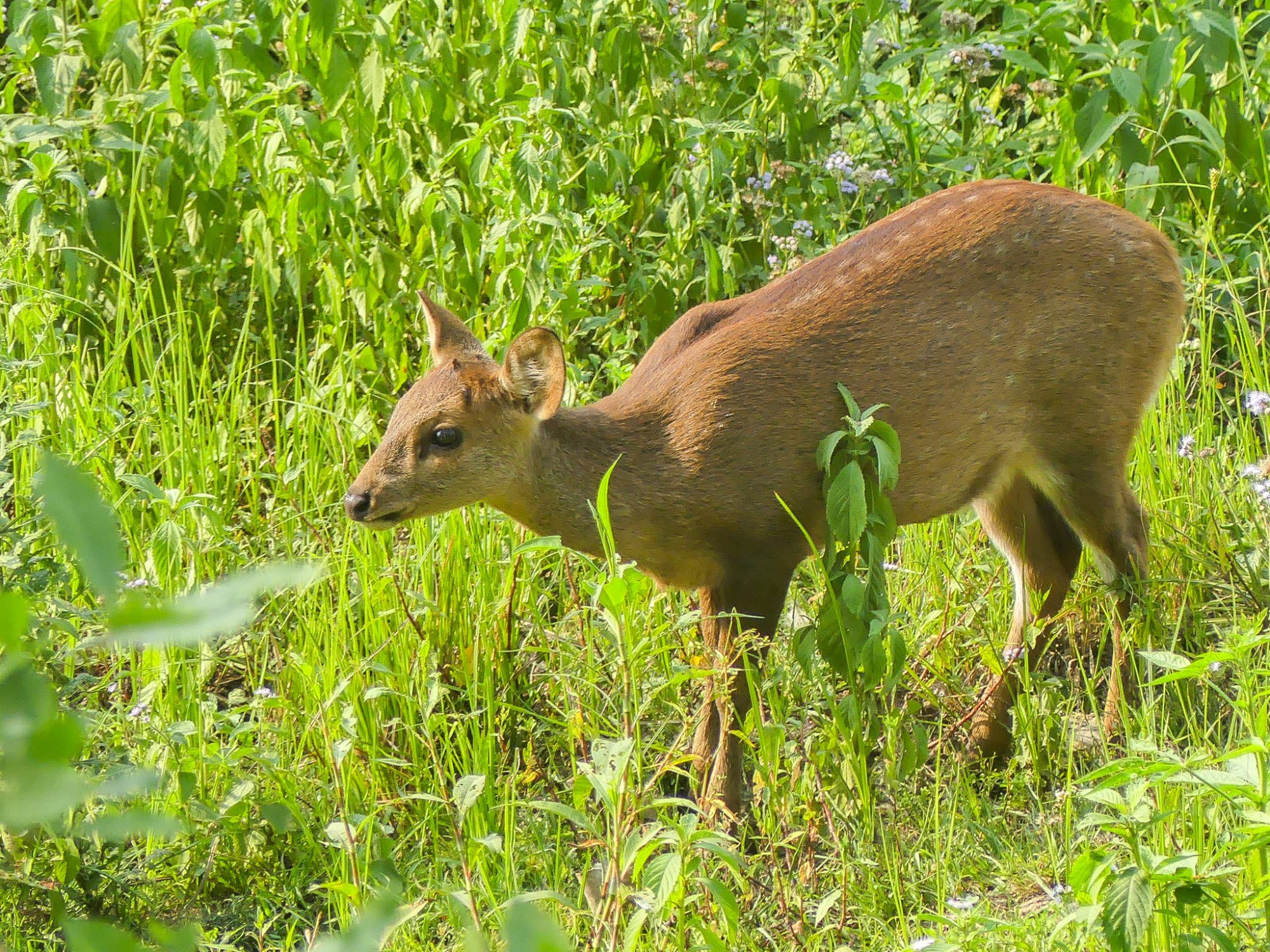
Hog Deer © Mike Prince / Flickr under a Creative Commons License This stocky deer is found in grassy floodplains, so it’s a bit easier to see than most on this list. It has short legs and tips its head back when running, so that it looks more like a pig than a deer (hence the name). Although a typically solitary species, they can be seen in large herds gathering on grasslands after a fire, where they feed on grass shoots.
Many deer species in the world have not fared as well as white-tailed deer, including the hog deer. Their South Asian populations have declined by more than 90 percent over the past 25 years due to poaching and habitat loss. They are mainly now confined to national parks and reserves.
Where to See: Kaziranga National Park, located in northeastern India, is the stronghold of hog deer, with an estimated population of 15,000 animals. This spectacular park is also home to one-horned rhinos, elephants, wild water buffalo, swamp deer and more. It’s one of the great wildlife reserves on earth.
Nepal’s Royal Chitwan and Bardia national parks also have strong populations of this species.
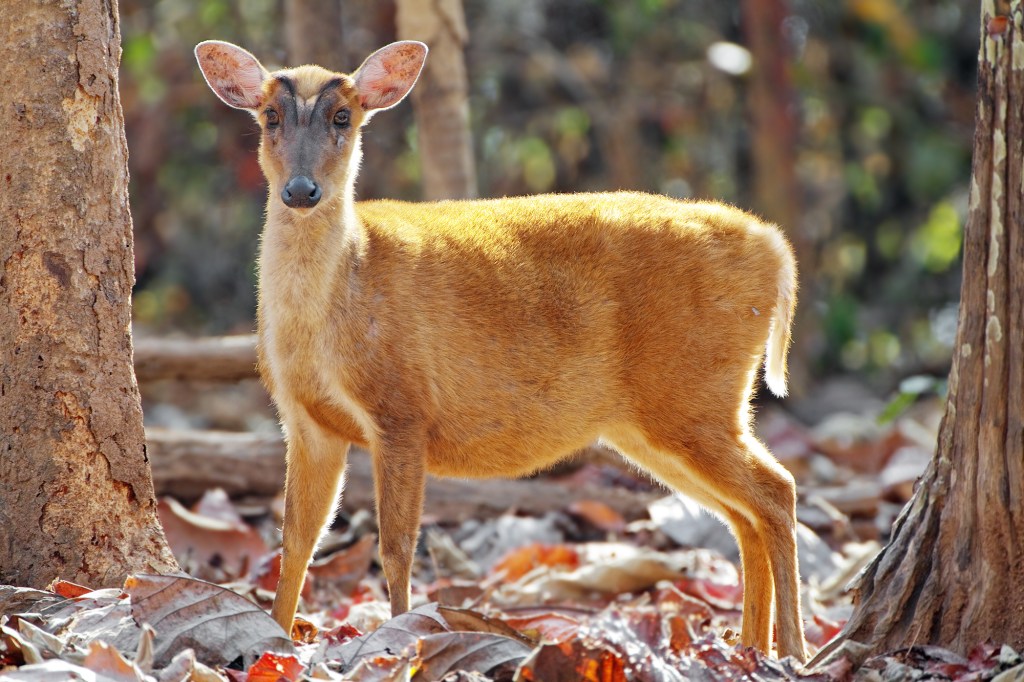
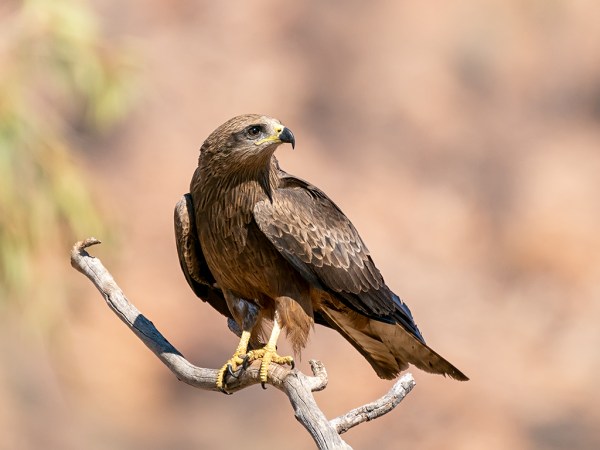


There are other locations that have small deer. There are at least 2 areas of Kansas that have miniature deer. Fish and Game folks are aware of them and have asked for the time being to leave them alone. They are believed to be a subspecies of whitetail deer but are around 14” at the shoulder. Looking at them through a rifle scope they seem to be exact copies of the local whitetails except at 10% of size. Both herds I know of have low numbers and will probably die out since they aren’t big enough to fight off coyotes and bobcats.
Knowing this there are probably other pockets of this subspecies around. It’s very confusing when they are first seen, your mind thinks your eyes are playing tricks.
There are some photos of a ‘Truong Son muntjac’ at https://uk.inaturalist.org/taxa/74658-Muntiacus-truongsonensis